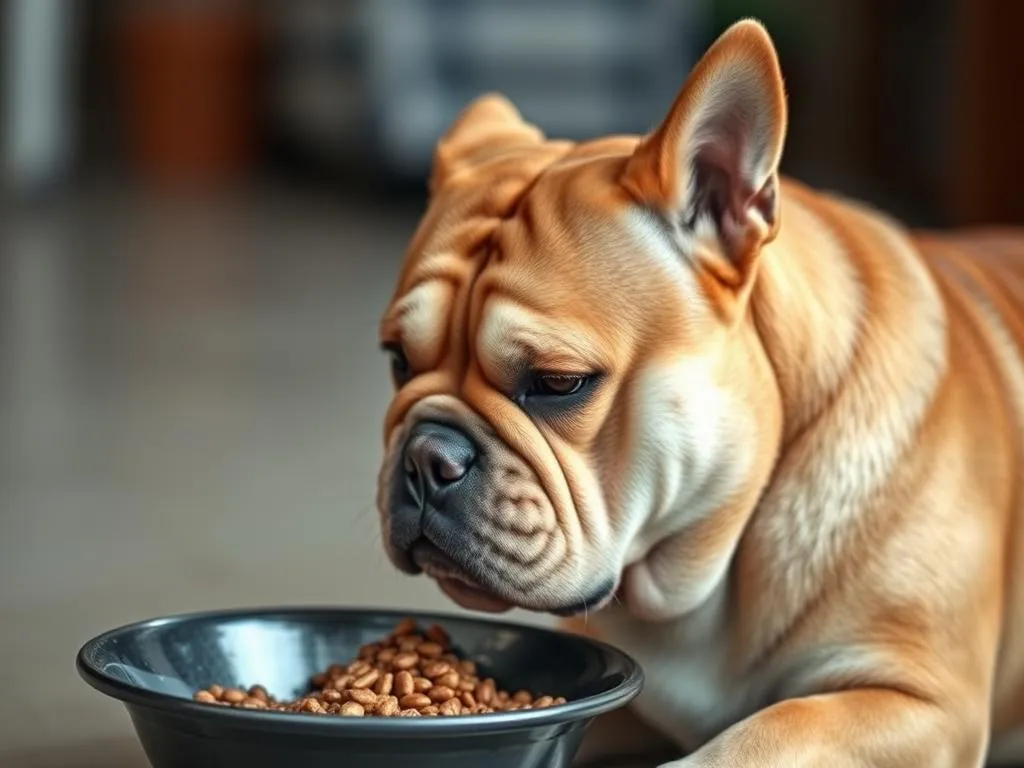
Introduction
Maintaining a healthy weight is crucial for the overall well-being of dogs. Just like humans, dogs are at risk for various health issues when they are overweight. Recent studies indicate that about 56% of dogs in the United States are classified as overweight or obese, leading to a host of health problems such as diabetes, joint issues, and heart disease. The diet you provide your dog plays a significant role in maintaining their ideal weight.
If your furry friend has gained some extra pounds, it’s essential to understand what to feed an overweight dog. This article will delve into dietary recommendations, nutritional needs, and practical tips to help your dog shed those extra pounds.
Understanding Canine Obesity
Definition of Canine Obesity
Canine obesity is defined as an excess accumulation of body fat that can adversely affect a dog’s health. It is commonly assessed using a Body Condition Score (BCS), which ranges from 1 to 9, with 1 being emaciated and 9 being severely obese. The ideal score for most dogs falls between 4 and 5.
Causes of Obesity in Dogs
Several factors contribute to canine obesity:
- Genetic Factors: Certain breeds are predisposed to gaining weight more easily than others.
- Sedentary Lifestyle: A lack of physical activity can lead to weight gain.
- Overfeeding and Poor Diet Choices: Feeding too much or providing low-quality food can result in excessive calorie intake.
- Medical Conditions: Conditions such as hypothyroidism can hinder weight loss efforts.
Understanding these factors is key to addressing the weight issue effectively.
Identifying an Overweight Dog
Signs of Overweight in Dogs
Recognizing an overweight dog is essential for timely intervention. Signs include:
- Visual Indicators: Look for a lack of waist definition and difficulty in seeing ribs.
- Behavioral Signs: An overweight dog may exhibit reduced activity levels and difficulty in movement, such as climbing stairs or playing.
When to Consult a Veterinarian
A consultation with a veterinarian is vital for any dog suspected of being overweight. A professional evaluation can help identify underlying health issues related to obesity, such as diabetes or arthritis, and provide tailored dietary recommendations.
Nutritional Needs of Overweight Dogs
Understanding Dog Nutrition Basics
To make informed decisions about what to feed an overweight dog, it’s important to grasp the basics of canine nutrition:
- Essential Nutrients: Dogs require a balanced diet consisting of proteins, fats, carbohydrates, vitamins, and minerals.
- Role of Fiber in Weight Management: Fiber can help dogs feel full without adding excessive calories, aiding in weight loss.
Caloric Requirements for Weight Loss
Calculating your dog’s daily caloric needs is crucial for weight management. Generally, a caloric deficit of 10-20% from their maintenance caloric intake is recommended for safe weight loss. This calculation can vary based on age, breed, and activity level, so it’s best to consult with a veterinarian for personalized recommendations.
What to Feed an Overweight Dog
Choosing the Right Dog Food
When considering what to feed an overweight dog, the type of food is crucial. Options include:
- Dry Dog Food: Often more economical and can help with dental health.
- Wet Dog Food: Generally more palatable and can help increase moisture intake.
- Raw Diets: Some owners opt for raw diets, but these require careful preparation to ensure nutritional balance.
- Homemade Meals: These can be tailored to specific dietary needs but should be balanced properly.
Recommended Dog Food Formulations
Look for low-calorie and weight management dog foods that are specifically formulated for overweight dogs. These diets typically have reduced fat and increased fiber to promote satiety. Prescription diets may also be beneficial, especially for dogs with specific health issues.
Portion Control and Meal Frequency
Proper portion control is essential when feeding an overweight dog. Here are some tips:
- Measuring Portions Accurately: Use a measuring cup to ensure you’re providing the correct amount of food.
- Recommended Feeding Schedule: Consider feeding multiple smaller meals throughout the day instead of one or two large meals to help manage hunger.
Homemade Diet Options
Benefits of Homemade Diets
Creating a homemade diet for your dog can offer several advantages:
- Control Over Ingredients: You can choose high-quality, nutritious ingredients for your dog.
- Tailoring Diet to Individual Needs: You can adjust the diet based on your dog’s specific health conditions or preferences.
Recipes for Weight Management
Here are some sample recipes for balanced meals that cater to weight management:
- Chicken and Vegetable Mix:
- 1 cup cooked, shredded chicken breast
- 1 cup steamed carrots and green beans
- 1/2 cup brown rice
-
Mix together and serve in appropriate portions.
-
Turkey and Quinoa Bowl:
- 1 cup ground turkey (cooked and drained)
- 1/2 cup cooked quinoa
- 1 cup chopped spinach (cooked)
- Combine and portion accordingly.
Important Considerations: Always avoid toxic foods for dogs, such as chocolate, grapes, and onions, when preparing homemade meals.
Incorporating Treats and Snacks
Healthy Treat Options
Treats can be included in your dog’s diet, but they should be low-calorie and healthy. Consider:
- Low-Calorie Treat Ideas: Fresh fruits like blueberries or apples (without seeds) and vegetables like carrots and green beans make great snacks.
- Store-Bought Low-Calorie Treats: Many brands offer low-calorie options designed for weight management.
Treat Management
To manage treats without exceeding daily caloric intake:
- Incorporate Treats Wisely: Treats should be accounted for within the daily caloric limit.
- Alternatives to Treats for Positive Reinforcement: Instead of using food treats, consider using praise, playtime, or toys as rewards.
Lifestyle Changes for Weight Loss
Importance of Exercise
Exercise is a critical component of weight loss. Here are some recommended activities:
- Walking: Regular walks can help burn calories and maintain muscle tone.
- Playing: Interactive play, such as fetch or tug-of-war, can keep your dog engaged and active.
- Swimming: For dogs that enjoy water, swimming is a low-impact exercise that can be very effective.
Monitoring Progress
Tracking your dog’s weight loss journey is essential for success:
- Keeping Track of Weight Loss Goals: Regularly weigh your dog to monitor progress.
- Adjusting Diet and Exercise Based on Progress: If your dog isn’t losing weight as expected, consult your veterinarian to make necessary adjustments to diet and exercise regimens.
Conclusion
Feeding an overweight dog requires careful attention to diet and nutrition. A balanced diet, tailored portion sizes, and regular exercise can help your dog achieve a healthier weight. Remember, your commitment to your dog’s health and well-being is essential in this journey. Consult your veterinarian for personalized guidance and support to ensure your furry friend enjoys a longer, healthier life.









